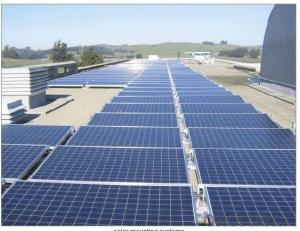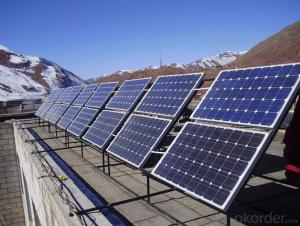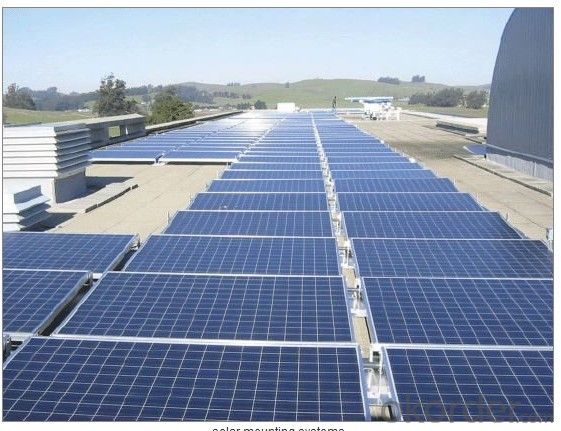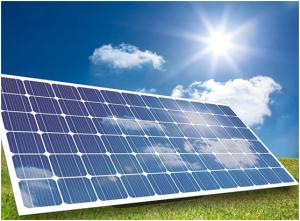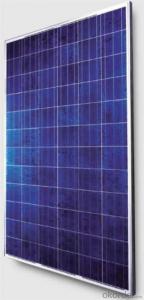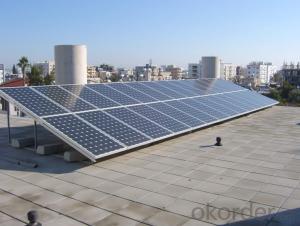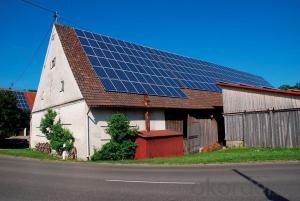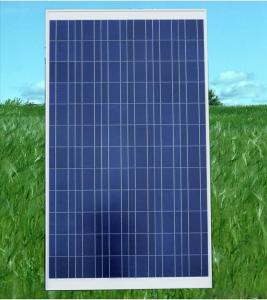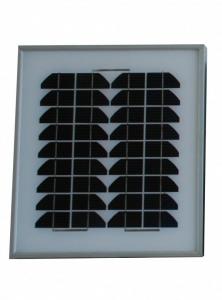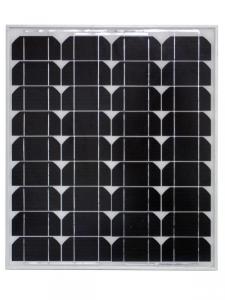Solar Panels San Luis Obispo - Polycrystalline Silicon Solar Panels 315w
- Loading Port:
- Nanjing
- Payment Terms:
- TT OR LC
- Min Order Qty:
- 200000 watt
- Supply Capability:
- 20000000 watt/month
OKorder Service Pledge
OKorder Financial Service
You Might Also Like
INTRODUCTION
This installation Manual contains essential information for the electrical and mechanical installation that your must know before installing CUSTOMER PV modules. This also contains safety information you need to be familiar with .All the information described in this manual are the intellectual property of CNBM and based on the technologies and experiences that have been acquired and accumulated in the long history of CUSTOMER. This document does not constitute a warranty, expressed or implied.
CUSTOMER does not assume responsibility and expressly disclaims liability for loss, damage, or expense arising out of in anyway connected with installation, operation, use or maintenance of the PV modules. No responsibility is assumed by CUSTOMER for any infringement of patents or other rights of third parties that may result from use of PV module.
CUSTOMER reserves the right to make changes to the product, specifications or installation manual without prior notice.
WORK PRINCIPLE
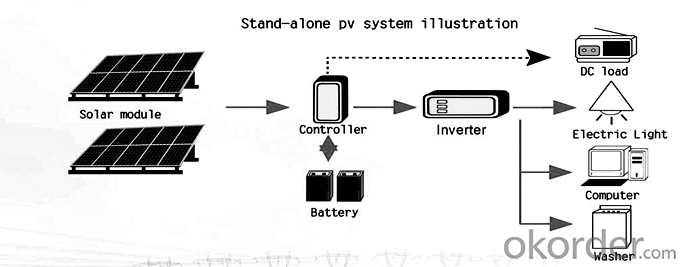
Process is as follows:
1, the battery test
2, positive Welding - Inspection –
3, on the back of cascading - Inspection –
4, laying (glass cleaning, material cutting, glass pre-processing, laying) –
5, laminating –
6, to flash ( to the side, cleaning) –
7, fitted border (glue, loading angle keys, punching, install box, scrub I glue) –
8, the welding junction box –
9, high-pressure test –
10, component testing -- -
11 appearance inspection, packaging and storage;
COMPONENTS
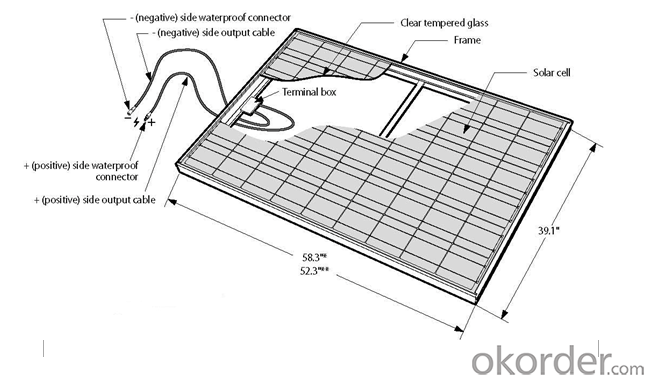
Data sheet
Maximum power | 315W |
Cell type(mm) | Polycrystalline solar cell 156*156 |
Number of cell(pcs) | 72(6*12) |
Manufacture site | China |
Open-circuit voltage(voc) | 45.1V |
Maximum power voltage(vmp) | 37.3V |
Short-circuit current(isc) | 8.88A |
Optimum operating current(imp) | 8.45A |
Power tolerance | 0~+5W |
Module efficiency | 16.2% |
Dimensions(mm) | 1956*992*40 |
Weight | 27 kg |
Backsheet | Silver |
Frame Colar | White |
Frame | Anodized Aluminum Alloy |
- Q: Pretty much, can solar panel's support the entire houses electrical needs generally, because I know sometimes the owner's can sell unused electricity back, any ideas or any ideas on how much the average home uses in kWh
- why okorder and we will tell you and everyone else what they would need.we will tell you to the dollar what it takes to accomplish your desire.thanks tommy
- Q: Do solar panels require a battery backup system?
- No, solar panels do not necessarily require a battery backup system. Solar panels generate electricity from sunlight, but without a battery backup, the excess energy produced during the day is typically fed back into the grid. However, a battery backup system can be useful in areas with frequent power outages or for those who want to store and use the solar energy generated during the night or when the grid is down.
- Q: Can I make a solar panel at home?How to make it?
- The first link is a video on how to make solar cells from powdered donuts and tea. But you probably want to make solar panels from scrap solar cells. The second video is on how to make solar panels from scrap solar cells. You used to be able to get damaged cells for free but so many people have been piecing them together that they sell them now. You've kinda missed the boat on solar panels for work alone.
- Q: I have an inverter and a battery 20 Amperes.Daily sun shine approx. 7 Hours.Do I need to buy anything or should I connect the solar panel to the Battery direct?
- connect the solar panel to the Battery direct during the day time that's how it works in ALL situations !
- Q: Hello, i want to ask whether if you could make an improvised version of solar panel made from an old CD or DVD?Is it possible or not?Please give me steps on how to make one if you know(put aside the one you see on quot;ehow: How to Make a Solar Panel From CDswhich says a bit confusing for me :( )Why not?
- Cd Solar Panel
- Q: How much would it cost (approximately) to convert my home (3 bed. 2 bath) to a green home that is run entirely upon solar panels on my roof? From the panels through installation does anyone know a price break down?
- the st element to comprehend is that there is no longer something complicated some photograph voltaic panel. this is not something greater beneficial than a selection of of photograph voltaic or PV cells on a board this is suited for the main spectacular area of your abode, generally on the roof. There are publications obtainable that coach you the thank you to construct a photo voltaic panel and a windmill for basically $a hundred and fifty, and it’s truly difficulty-free to make. appropriate of all, you may save 70% or greater on your potential invoice, including as much as hundreds of dollars each and each 2 months in reductions. I reviewed the two unfastened publications and paid publications and have arise with our ideal to construct your individual photograph voltaic panels.
- Q: Can solar panels be used in agriculture?
- Yes, solar panels can be used in agriculture. They provide a renewable and clean source of energy that can power various agricultural activities such as irrigation systems, lighting, and machinery. Additionally, solar panels can be installed on agricultural buildings or unused land, allowing farmers to generate their own electricity and reduce their carbon footprint.
- Q: i took some solar yard lights apart and put them together in a series. i was told if you take AMPS times VOLTS = WATTS. do you test it with ac volt or dc volts? I tested mine with dc volts and got 4 volts in good sun and had my meter set on Ma or milliamps and got .83 which i am asuming that is .83 of one amp now i took those and multiplied .83 times 4 volts to = 34.03 watts. Is this large enough to charge a car battery in a day? And doese it make a difference for amps on how fast it charges or watts. i also was looking around and found 30 watt panels but had higher amps. I am very interested in building solar panels but i realize i dont know what i need to do to make shur they are big enough. my panel is only 9inch by 0 inch. It seems weird that i am putting out 4 volts
- If a car battery contains 50 amp hours of charge at 2 volts, that's 600 watt hours of energy. divided by 34.03 watts, 7.63 hours to charge completely in direct sunlight. You don't want to connect them all in series. You want about 4 or 5 volts to charge a 2 v battery, so you should connect groups in parallel, and connect those groups in series to make your voltage. You'll end up with the same amount of power, lower volts and higher amps. It will work for trickle charging your battery if it's not too far run down.
- Q: Okay, so I have a science fair coming up soon and I need help with my project. SO - What should I use to demonstrate with the propeller? A toy boat? Plane? And I only have mini solar panels ; so how do I put the solar panels on the toy boat/plane to make the propeller move off of the sun's energy? Thanks. Steps please!
- Solar panels produce electricity. To move the propeller you need mechanical motion. An Electric motor converts from electrical to mechanical power. Most Solar Panels produce DC electricity as do batteries so you need a DC motor that is sized to match the Output of your solar panels. For small temporary projects like this I find that hot melt glue is great to assemble parts. Using a voltage meter you can expose your solar panels to a strong light (or one equal to what you expect during your demonstration) and measure the voltage across the terminals. This may help to size the motor. It depends upon the size of your propeller and how it is made. Your three choices are to use it to power an airplane, to power a boat underwater or to power a boat like an air boat. You might also use the air boat concept to make a car. (air car) The air boat might be the simplest to make but you will need a body of water to demonstrate the concept. The air car doesn't have such a requirement.
- Q: Can solar panels be used to power swimming pools or hot tubs?
- Yes, solar panels can be used to power swimming pools or hot tubs. Solar energy can be harnessed through solar panels and converted into electricity to operate the pumps, heaters, and other equipment required to maintain the desired temperature and cleanliness of the water in swimming pools or hot tubs.
Send your message to us
Solar Panels San Luis Obispo - Polycrystalline Silicon Solar Panels 315w
- Loading Port:
- Nanjing
- Payment Terms:
- TT OR LC
- Min Order Qty:
- 200000 watt
- Supply Capability:
- 20000000 watt/month
OKorder Service Pledge
OKorder Financial Service
Similar products
Hot products
Hot Searches
Related keywords
